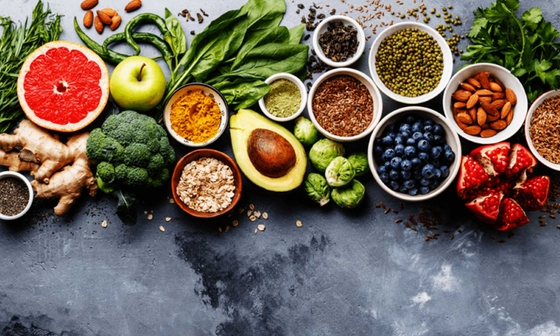
Protein and heart health
What are the best sources of protein when it comes to your heart health
Key takeaways
- Protein foods impact your risk of heart disease in different ways.
- Legumes (e.g. chickpeas, beans and lentils), nuts, seeds, fish and seafood are the most beneficial sources of protein.
- Eggs and poultry do not impact your risk of heart disease.
- Red meat should be limited to less than 350 g (1-3 meals) a week.
- Processed meat can increase your risk of heart disease and should be avoided.
Protein is a macronutrient made up of amino acids. Your body uses amino acids to repair and build bones and muscles. Protein is also a source of energy and is vital to your heart. Consuming healthy proteins from plant and animal sources as part of a balanced diet can help lower your risk of heart disease.
Sources of healthy protein
When choosing protein foods, include a variety of sources. Protein from plant- or animal-based sources provide different nutrients for your body. Each source of protein can have a beneficial, neutral or potentially harmful effect on your heart health and risk of heart disease.
Legumes
Legumes (also known as pulses), are plant-based sources of protein. They also contain soluble fibre, micronutrients and have a low glycaemic index (GI). Foods high in soluble fibre such as legumes are particularly beneficial to lower total cholesterol levels, which can help reduce your risk of heart disease.
Legumes include:
- All types of beans
- Chickpeas
- Lentils
- Split peas
- Soybeans
How you can eat more legumes
Legumes come in a variety of forms including dried (uncooked), tinned, frozen or ground into flour. When buying tinned legumes, choose no added salt or reduced salt varieties.
Here are some ways to include more legumes in your diet:
- Add legumes to soups and salads
- Eat roasted chickpeas as a snack on-the-go
- Serve hummus with vegetable sticks as a snack
- Substitute mince with lentils or chickpeas in homemade burger patties
Nuts and seeds
Nuts and seeds are plant-based foods that pack a powerful nutritional punch. They are rich in protein, fibre, healthy fats and a wide range of essential micronutrients, which are all beneficial for heart health. Nuts include:
- almonds
- Brazil nuts
- cashews
- hazelnuts
- macadamias
- peanuts
- pecans
- pine nuts
- walnuts.
Seeds include:
- chia seeds
- flaxseeds/ linseeds
- poppy seeds
- pumpkin seeds
- sesame seeds
- sunflower seeds.
How to include nuts and seeds in your diet
Eating unsalted nuts and seeds regularly as part of a heart-healthy eating pattern can help lower total and LDL-cholesterol (bad cholesterol), and your risk of heart disease.
- Add nuts and seeds into stir fries or pasta dishes. Cashews, peanuts and sesame seeds are great additions to stir fries and pine nuts and walnuts go well with pasta dishes.
- Toss lightly toasted almonds, walnuts or sunflower seeds into salads for some extra crunch and flavour.
- Sprinkle chopped nuts or seeds on porridge, cereal or yoghurt.
- Enjoy a handful of plain, unsalted nuts or peanut butter on wholegrain toast as a snack.
Fish and seafood
Fish and seafood are great sources of protein and omega-3 fatty acids, which may lower the risk of heart attacks and dying from heart disease. Since our bodies can’t produce omega-3 naturally, we need to eat foods that contain it. Fish is one of the best dietary sources of omega-3.
Good sources of fish and seafood include:
- Whiting
- Trout
- Basa
- Prawns
- Oysters
- Scallops
- Calamari
- Crab
- Mussels
Good sources of fish with the highest levels of omega-3 (sometimes called ‘oily fish’) include:
- Salmon
- Tuna
- Sardines (fresh or tinned)
- Mackerel (fresh or tinned)
How to eat more fish and seafood
Frozen or tinned seafood can be a cheaper and more convenient alternative to fresh. When buying tinned fish, be mindful of salt and other ingredients in flavoured varieties or opt for unflavoured alternatives.
- Add unflavoured tinned tuna or salmon as a sandwich filler or to top a healthy salad
- Enjoy baked or steamed fish parcels as a delicious and simple dinner option
- Add seafood marinara mixes to stir-fries and pasta dishes
- Use different herbs and spices like dill, parsley, coriander, lemongrass, ginger, garlic, lemon or paprika to flavour fish and seafood.
The Heart Foundation recommends including 2-3 serves of fish per week (150-200 g per serve) as part of a heart-healthy eating pattern.
Serving size:
- 150-200 g of fresh fish (the size of your hand)
Eggs
Eggs are a complete source of protein. They are rich in essential vitamins and minerals such as vitamins A, E and B12, selenium, choline and iron.
Foods high in saturated fat and trans-fat have the greatest impact on your cholesterol levels. Eggs have a neutral impact on heart health which means that they neither increase nor decrease the risk of heart disease in most people.
How many eggs should you eat per week?
Eggs can be included as part of a heart-healthy eating pattern. The Heart Foundation does not set a limit on the number of eggs you should eat a week.
A maximum of seven eggs a week is recommended for those with:
- High LDL cholesterol (bad cholesterol)
- Type 2 diabetes
- Existing heart disease
What you eat with your egg matters
Eggs can be eaten with balanced healthy meals or as a healthy snack option:
- Enjoy eggs and avocado on wholegrain toast as a healthy alternative to a bacon and egg roll
- Combine eggs with vegetables, for example, add eggs to salads or sandwiches.
- Enjoy hard-boiled eggs as a snack or pair them with your favourite dip for some extra flavour.
Poultry
Poultry is a good source of protein, niacin, vitamin A, magnesium and zinc. Poultry products include:
- Chicken
- Turkey
- Duck
- Other birds
The wings, thighs and breasts of birds all have different nutrient levels. Whether the skin is on or off also matters.
How much poultry should you eat per week?
Poultry has no known impact on heart disease which means that consuming it doesn’t increase or decrease the risk of heart disease. While there’s no maximum limit for how much poultry you should eat, it is not directly beneficial to heart health.
Poultry can be consumed as part of a heart-healthy eating pattern, along with other sources of healthy protein.
Tips to cook or eat healthier with poultry:
- Remove the skin.
- Choose lean cuts, like chicken or turkey breasts.
Red meat
Red meat is the most common animal-based source of protein. It also provides us with iron, zinc and vitamin B12.
Red meat includes:
- Beef
- Veal
- Pork
- Lamb
- Mutton
- Kangaroo
- Rabbit
- Other game meats.
Red meat and its health risks
Evidence has found high red meat consumption moderately increases the risk of heart disease and stroke and may lead to weight gain. For people with type 2 diabetes, limiting red meat consumption can help lower the risk of heart disease.
How much red meat should you be eating per week?
Limiting red meat consumption to 350 grams (or 1-3 meals) of lean meat a week can have a big impact on improving your heart health. On average, Australians are eating 1.6 times more than the recommended limit of 350 grams a week.1
If choosing to eat red meat, opt for lean cuts and remove visible fat before cooking.
Serving size:
- One serve is 100 g (the size of your palm).
- Two small chops equal a serve of red meat.
Unhealthy proteins: Processed meat
Processed and deli meats are consistently linked to poor health outcomes. These products tend to be high in salt, additives and saturated fat, which are linked to a higher risk of heart disease and other chronic conditions.
Eating well for your heart means avoiding or limiting the amount of processed meat you consume.
Processed meats are preserved to last longer and can be:
- cured
- salted
- smoked
- dried
- tinned.
Examples of processed meat include:
- sausages
- ham
- salami
- beef jerky
- bacon.
How to swap out processed meats with healthier alternatives
- Use roast chicken, unflavoured tinned tuna, or eggs instead of ham or other processed meats in sandwiches and salads.
- Enjoy falafels or homemade veggie or meat patties as an alternative to sausages in wraps and burgers.
Picking your proteins
Remember that no single food or nutrient promotes heart health over the other. It is the overall eating pattern that matters the most. Opting for healthier proteins can help minimise your risk of heart disease.
References
- Australian Bureau of Statistics. 2016. 4364.0.55.012 - Australian Health Survey: Consumption of Food Groups from the Australian Dietary Guidelines, 2011-12. Accessed September 2022; https://www.abs.gov.au/ausstats/[email protected]/Lookup/by%20Subject/4364.0.55.012~2011-12~Main%20Features~Lean%20meats%20and%20alternatives~13
- Dietary Position Statement: Fish, Seafood & Heart Healthy Eating (2015), National Heart Foundation of Australia.
- Dietary Position Statement: Heart Healthy Eating Patterns (2019), National Heart Foundation of Australia.
- Dietary Position Statement: Meat & Heart Healthy Eating (2019), National Heart Foundation of Australia.
You might also be interested in...

Build your healthy eating skills
We’re here to help with our tips and tools to help you plan, shop and cook heart-healthy meals.

9 food and heart health myths, busted
Let’s dive into nine common food and health myths and the facts behind them.

How to follow a heart healthy eating pattern
Follow these easy tips to boost your heart health and embrace a heart-healthy eating pattern.
Last updated27 August 2024
Last reviewed27 August 2024